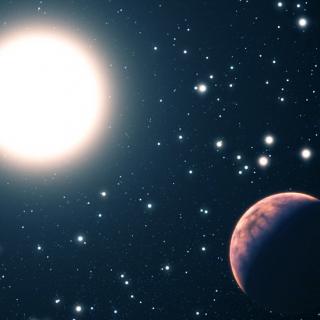Bibcode
Santos, N. C.; Mortier, A.; Sousa, S. G.; Adibekyan, V. Zh.; Fernandes, J.; Rebolo, R.; Mayor, M.; Udry, S.; Israelian, G.; González Hernández, J. I.; Delgado Mena, E.
Referencia bibliográfica
Astronomy and Astrophysics, Volume 562, id.A92, 17 pp.
Fecha de publicación:
2
2014
Revista
Número de citas
110
Número de citas referidas
102
Descripción
Aims: We want to study the effects of the formation of planets
and planetary systems on the atmospheric Li abundance of planet host
stars. Methods: In this work we present new determinations of
lithium abundances for 326 main sequence stars with and without planets
in the Teff range 5600-5900 K. The 277 stars come from the
HARPS sample, the remaining targets were observed with a variety of
high-resolution spectrographs. Results: We confirm significant
differences in the Li distribution of solar twins (Teff =
T⊙ ± 80 K, log g = log g⊙ ±
0.2 and [Fe/H] = [Fe/H]⊙ ± 0.2): the full sample
of planet host stars (22) shows Li average values lower than "single"
stars with no detected planets (60). If we focus on subsamples with
narrower ranges in metallicity and age, we observe indications of a
similar result though it is not so clear for some of the subsamples.
Furthermore, we compare the observed spectra of several couples of stars
with very similar parameters that show differences in Li abundances up
to 1.6 dex. Therefore we show that neither age, mass, nor metallicity of
a parent star is the only cause for enhanced Li depletion in solar
analogues. Conclusions: We conclude that another variable must
account for that difference and suggest that this could be the presence
of planets that causes additional rotationally induced mixing in the
external layers of planet host stars. Moreover, we find indications that
the amount of depletion of Li in planet-host solar-type stars is higher
when the planets are more massive than Jupiter.
Based on observations collected at the La Silla Observatory, ESO
(Chile), with the HARPS spectrograph at the 3.6 m ESO telescope, with
CORALIE spectrograph at the 1.2 m Euler Swiss telescope and with the
FEROS spectrograph at the 1.52 m ESO telescope; at the Paranal
Observatory, ESO (Chile), using the UVES spectrograph at the VLT/UT2
Kueyen telescope, and with the FIES, SARG, and UES spectrographs at the
2.5 m NOT, the 3.6 m TNG and the 4.2 WHT, respectively, operated on the
island of La Palma in the Spanish Observatorio del Roque de los
Muchachos.Table 6 is available in electronic form at http://www.aanda.org
Proyectos relacionados

Pruebas Observacionales de los Procesos de Nucleosíntesis en el Universo
Recientemente se han llevado a cabo varios análisis espectroscópicos de estrellas con planetas. Uno de los resultados más relevantes ha sido descubrir que las estrellas con planetas son en promedio más metálicas que las estrellas del mismo tipo espectral sin planetas conocidos (Santos, Israelian & Mayor 2001, A&A, 373, 1019; 2004, A&A, 415, 1153)
Garik
Israelian